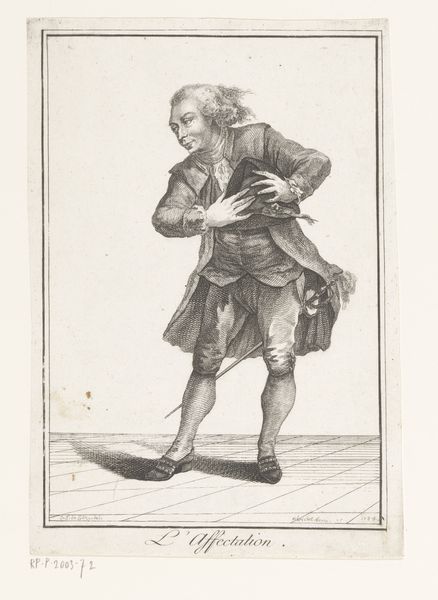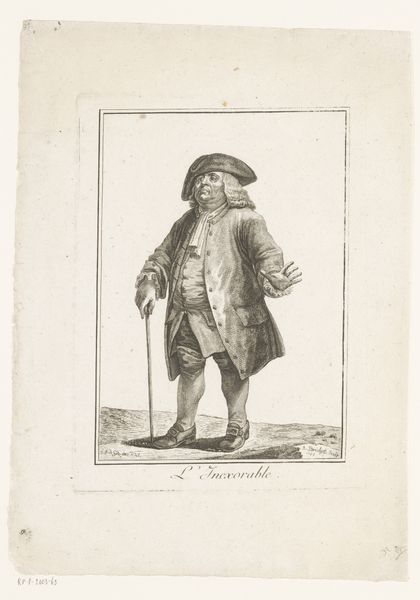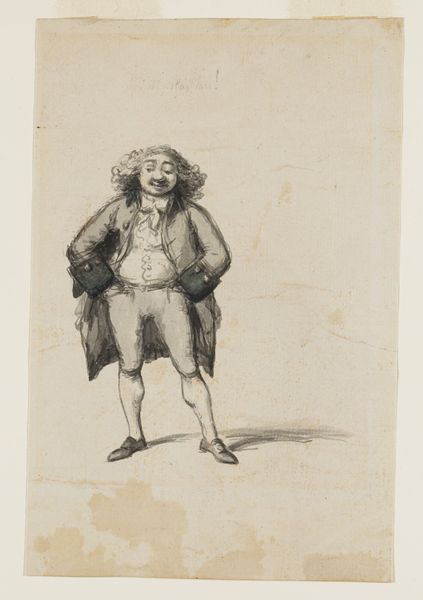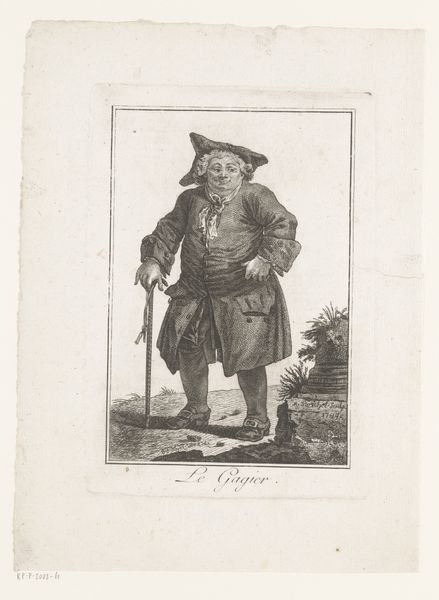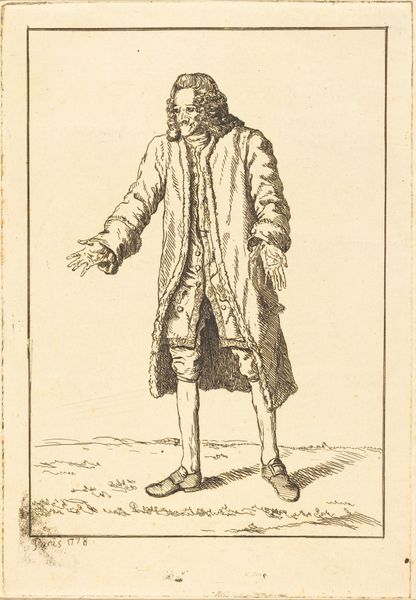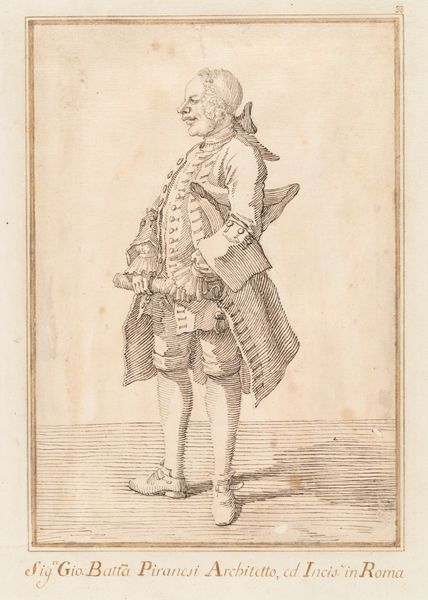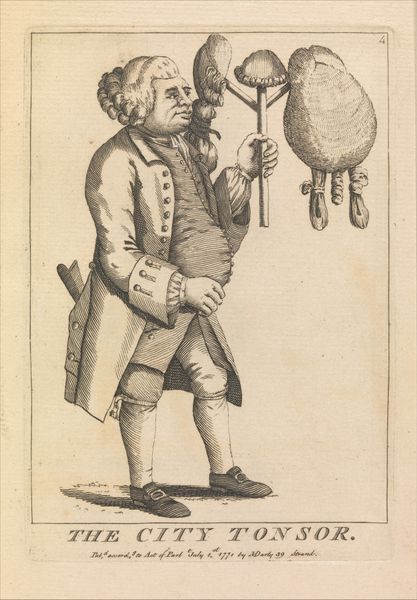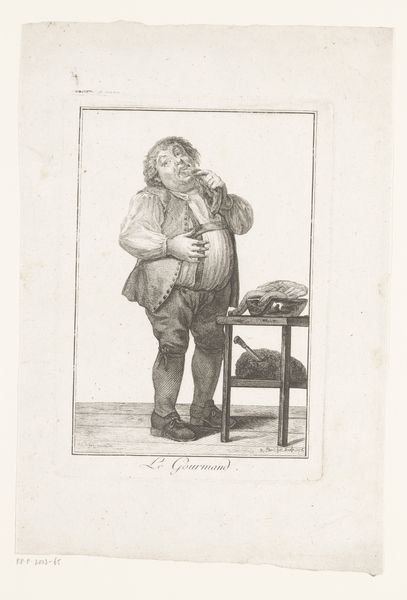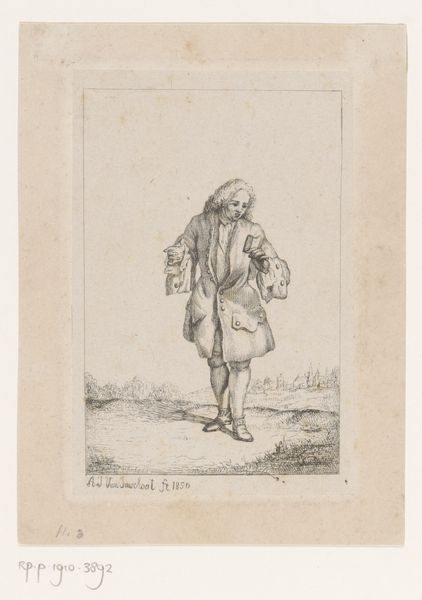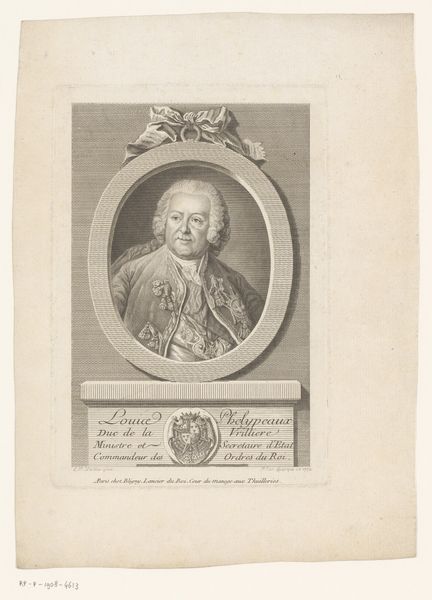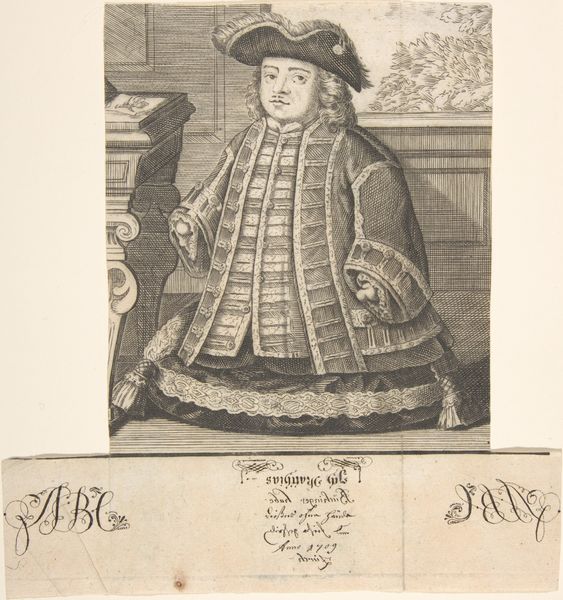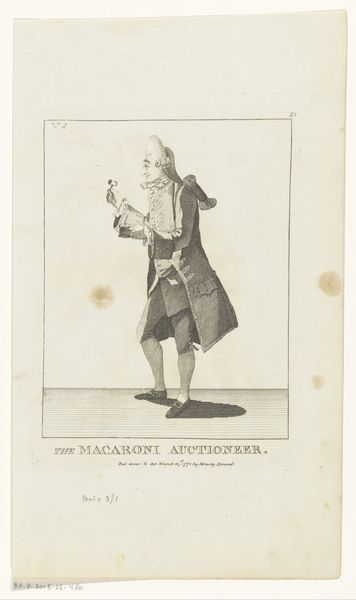
print, engraving
#
portrait
#
baroque
# print
#
caricature
#
old engraving style
#
traditional media
#
line
#
pencil work
#
genre-painting
#
engraving
Dimensions: height 214 mm, width 138 mm
Copyright: Rijks Museum: Open Domain
Editor: Here we have "Portret van de dwerg La Grandeur," created in 1738 by Jacques Philippe Le Bas. It's an engraving, and immediately the exaggerated proportions strike me. The head seems disproportionately large for the body. How do you interpret this work through its formal elements? Curator: The distortion of scale, as you observed, is central. Notice how the artist manipulates line and form to create this caricature. The meticulous detail in the face, juxtaposed with the relatively simplified rendering of the body, generates a specific tension. Is this tension playful or satirical, would you say? Editor: Hmm, that's interesting. The figure seems to be presented somewhat formally despite the obvious caricature; a play of seriousness perhaps. How does that balance of detailed facial features with his stubby form guide you to analyze the image as a whole? Curator: Observe the precise and delicate rendering, especially in areas like the face and the checkered floor. How does this careful craft contrast with the distortions within the overall figuration? The interplay creates a compelling dynamic. Where might that dynamic lead you? Editor: That juxtaposition of the figure on the floor plane, his proportions as related to one another, suggests that his presentation must be perceived with intentional deliberation. The craftsmanship highlights the contrast between intention and interpretation, if that makes sense? Thank you, this has been illuminating. Curator: Indeed. And by observing line, form, and composition in meticulous juxtaposition we come closer to an aesthetic awareness of its subject. Thank you for this engaging exchange.
Comments
No comments
Be the first to comment and join the conversation on the ultimate creative platform.
